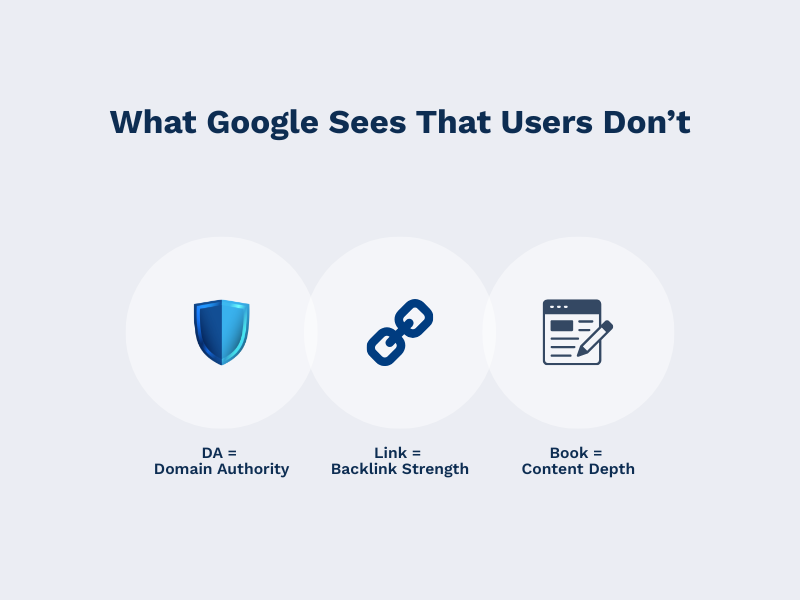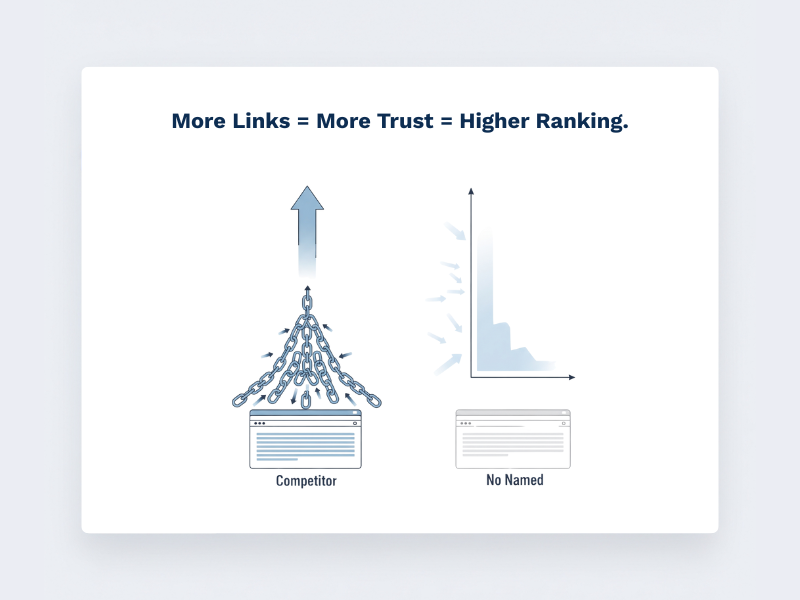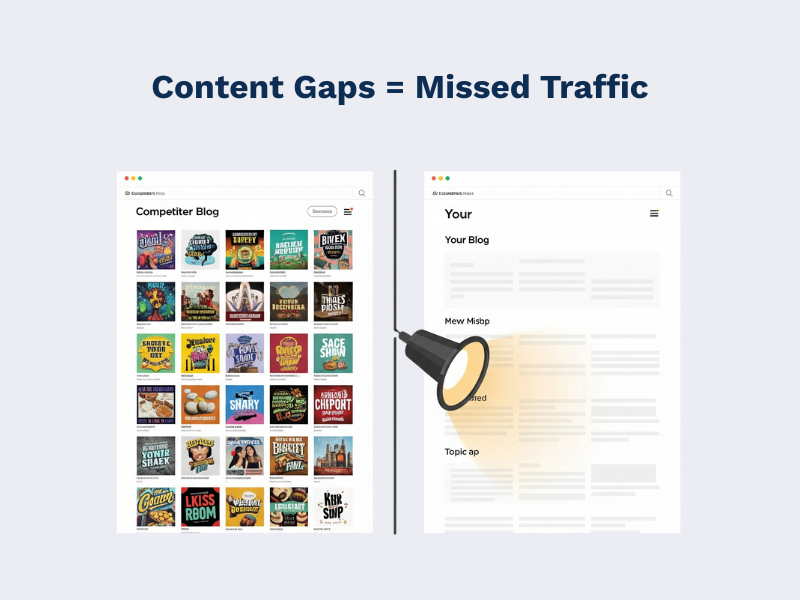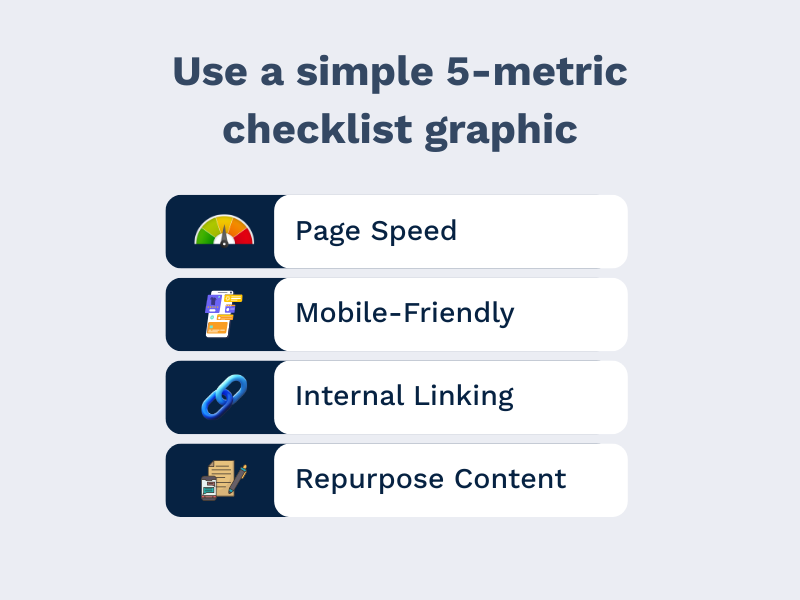You’ve invested in a sleek, modern website. It loads fast, looks great on mobile and follows all the latest design trends. Yet somehow, your competitor, with their outdated layout and clunky interface, is outranking you on Google. Frustrating, isn’t it?
Many business owners assume that a better-looking website should naturally rank higher. But search engines don’t see what your customers see. They prioritise technical SEO strategies, content depth and backlink credibility over visual appeal.
That means a “worse” website, at least on the surface, can outperform yours if it’s supported by stronger optimisation strategies. In 2025, Google’s algorithm gives 23% of its ranking weight to the consistent publication of satisfying content, while backlinks and niche expertise each contribute 13%.
User engagement metrics-like time on site and bounce rate-now account for 12% of ranking factors, making content depth and authority more important than ever. Meanwhile, technical SEO factors such as mobile-friendliness and page speed still play a vital role, but visual design alone won’t boost your rankings if these elements are lacking.
In this blog, we’ll break down why design isn’t everything when it comes to search rankings, what hidden SEO factors might be helping your competitors and how you can start closing the gap today.

Search engines aren’t judging your website based on how modern your fonts look or how sleek your colour palette is. They’re assessing far less visible, but far more important, ranking factors.
Domain Authority is a score that predicts how well a website will rank on search engines. It’s based on factors like the quality and quantity of backlinks, historical performance and overall trustworthiness. Even if your website looks better, a competitor with a higher DA will often outrank you because search engines see them as more credible.
One of the biggest ranking factors is how many high-quality websites are linking back to yours. A competitor may have an outdated website, but if they’ve built up strong inbound links from reputable domains, Google sees that as a signal of trust and rewards them with better rankings.
Google's priority is giving users the best possible answer. That means ranking content that’s thorough, well-structured and aligned with search intent. A well-written blog on an older-looking site can easily beat out a shallow page on a beautifully designed one.
Ultimately, Google doesn’t rank websites based on looks; it ranks based on value and authority.

You might be doing everything right on-page, but if your competitor has a stronger backlink profile, they’ll often win in the rankings. Backlinks remain one of the most influential SEO factors, especially when they come from trusted, high-authority sources.
When respected websites link to your competitor’s content, it signals to search engines that their site is trustworthy and valuable. The more credible these referring domains are, the more weight they carry, helping boost rankings across the board.
Use tools like Ahrefs, SEMrush, or Moz to uncover where your competitors’ backlinks are coming from. Look for:
This will help you understand not just how many backlinks they have, but where they’re getting them.
To close the gap, focus on earning your high-quality links:
It’s not about copying your competitors' link-for-link, but learning from their strategy and building a stronger one of your own.

Even if your website looks great and your core pages are well-optimised, your competitors may be winning traffic simply by covering more ground, or covering it better. That’s where content gap analysis comes in.
Content gaps are the topics or keywords your competitors are ranking for, but you’re not. These could be specific blog articles, landing pages, or search queries where your site is missing out on potential visibility.
Tools like Ahrefs and Google Search Console allow you to compare your site’s content with your competitors’. Look for:
This reveals untapped opportunities where a new page, or a better version of an existing one, can help you steal back traffic.
It’s not enough to use the right keywords; you need to satisfy the intent behind them. If your competitor is ranking because they answer a user’s question more thoroughly, your goal should be to produce content that’s clearer, deeper and more helpful.
Structure your pages around real user queries, use headings for scannability and include examples, visuals, or FAQs to give users exactly what they’re looking for.

Ranking higher isn’t just about backlinks and content; it also comes down to how well your site performs behind the scenes. These additional SEO strategies help strengthen your foundation and boost your overall visibility.
A slow or unresponsive site can hurt your rankings, no matter how strong your content is. Focus on:
A clear internal linking structure helps both users and search engines navigate your site. Link between related blogs, service pages and key categories to pass authority and signal relevance.
Fresh content performs better. Regularly audit older posts and pages, update outdated information and republish refreshed versions. You can also repurpose blogs into videos, infographics, or social posts to extend their reach.
These ongoing efforts not only improve rankings, they future-proof your SEO performance against competitors who may be trying to catch up.
At Mr Digital, we worked with Menier Venues to improve their search performance, not by redesigning their site, but by strengthening the foundation of their SEO. We enhanced on-page content, optimised for high-intent keywords like “meeting rooms London,” improved internal linking and focused on technical site health.
The results were clear:
These improvements were driven by strategy, not design; a clear example of how focusing on what matters to search engines can deliver measurable results, even in a competitive space.
You can read more on our case studies page here.
It’s easy to feel disheartened when a competitor with a less impressive website is outranking you, but now you know why. Search engines don’t rank based on design, they rank based on authority, content and technical performance.
A strong backlink profile, comprehensive content that meets search intent, and a solid technical foundation all play a far bigger role than aesthetics. And while design matters for user experience, it’s your strategic SEO efforts that truly move the needle.
Want to close the SEO gap? Let’s analyse your competitors and build a strategy to outrank them. Contact our team today.